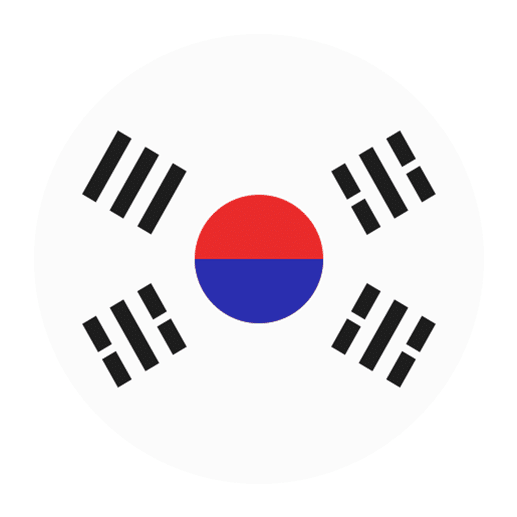Korean Grammar Theory Exploration

Welcome to the Korean Grammar Theory section of Language Scholars AI! Korean language, with its unique structure and linguistic features, is becoming increasingly significant in global communication, academia, and cultural exchange. Delving into and mastering Korean grammar theory is crucial for effective communication and can unlock numerous personal and professional opportunities. In this section, we are committed to establishing a deep understanding of Korean grammar theory to support learners at every level.

Korean Grammar Theory: Fundamentals
Here, you will find an extensive overview of Korean grammatical rules, ranging from the basics such as particles, honorifics, and conjugation to more advanced concepts like sentence structure, politeness levels, and syntactic nuances. Each topic is detailed with clear explanations, practical examples, and tips designed to help you grasp and retain the intricacies of Korean grammar theory effectively. This methodical approach not only eases the learning process but also empowers you to develop a robust command of the Korean language. Whether you are a beginner starting your journey or an advanced learner aiming to refine your skills, this section is your ultimate resource for understanding Korean grammar theory. Embrace the intricacies of Korean grammar with us and enhance your language skills in a systematic and engaging manner!
Korean grammar theory is an essential cornerstone for anyone embarking on the journey to learn the Korean language. Unlike English, Korean is an agglutinative language that relies heavily on particles and markers to indicate grammatical relationships within a sentence. One of the first concepts introduced in Korean grammar theory is the Subject-Object-Verb (SOV) word order, which contrasts with the Subject-Verb-Object (SVO) structure typical of English. Understanding this fundamental difference is crucial for anyone aiming to master Korean grammar.
Another key aspect of Korean grammar theory is the use of particles. Particles are small words that attach to nouns to indicate their grammatical function, such as subject, object, or possessive. For example, the subject particle ‘은/는’ or ‘이/가’ and the object particle ‘을/를’ define the role each noun plays in a sentence. Mastery of particles is indispensable for constructing grammatically accurate sentences.
The concept of verb conjugation in Korean grammar theory differs significantly from English. Korean verbs conjugate according to the speech level and the politeness required by the context, not by the subject of the sentence. For example, the verb ‘to go’ (가다) can be conjugated into various forms like 갑니다 (formal), 가요 (polite), or 가 (informal). The correct conjugation depends on both the relationship between the speakers and the situation’s formality.
Korean Grammar Theory in Context
Understanding Korean grammar theory is not just about memorizing rules; it’s about applying those rules in context to communicate effectively. One practical approach to mastering Korean grammar theory is by using tools like Grammar Tutor AI. This advanced tool helps learners practice sentence construction and receive instant feedback, which is invaluable for internalizing grammatical rules.
Korean grammar theory helps to nurture an understanding of particles within real-life context. To illustrate, take the sentence “나는 학교에 갔다” (I went to school). Here, ‘나는’ uses the subject particle to indicate “I,” and ‘학교에’ uses the locative particle ‘에’ to indicate the destination. When learning Korean grammar theory, breaking down sentences like these enables learners to see how particles govern noun functions in contextual sentences.
Another crucial part of Korean grammar theory involves verb conjugation in practice. Consider the verb ‘공부하다’ (to study). In a formal setting, you would use ‘공부합니다,’ while in a casual conversation, ‘공부해요’ or ‘공부해’ might be more appropriate. Tools like Grammar Tutor AI allow you to practice these nuances by providing contextual exercises that mirror real-life situations, ensuring that you use the right form based on the speech level and context.
Lastly, Korean grammar theory also delves into sentence endings, which can vary based on emotions, questions, or statements. For instance, the same verb ‘가다’ can end with ‘-ㅂ니다’ (formal statement), ‘-요’ (polite question or statement), or ‘-고 싶다’ for expressing a desire. By exploring different sentence endings through Grammar Tutor AI, learners can practice making their sentences more dynamic and contextually appropriate.
Mastering Korean grammar theory requires a deep dive into practical applications. Tools like Grammar Tutor AI are invaluable, offering contextual exercises and real-time feedback to help learners navigate the complexities of Korean grammar theory. Through diligent study and practical application, learners can build a strong foundation in understanding and effectively communicating in Korean.
Learn Korean
Find out more about Korean learning.
Korean Theory
Find out more about Korean grammar theory.
Korean Exercises
Find out more about Korean grammar practice and exercises.

